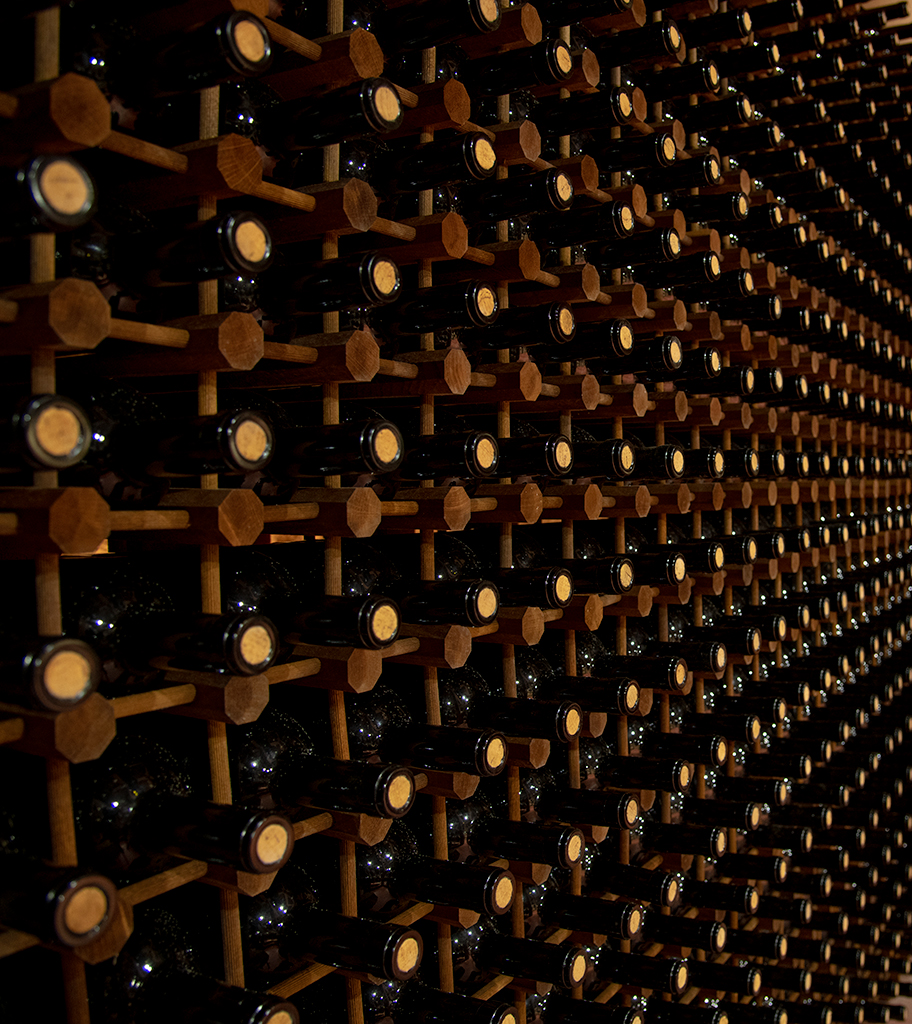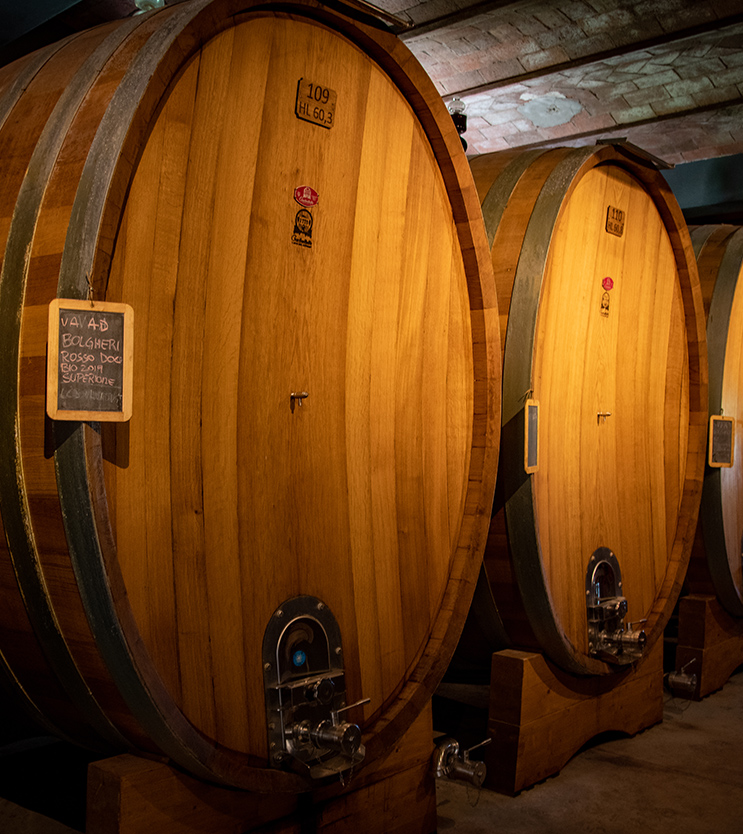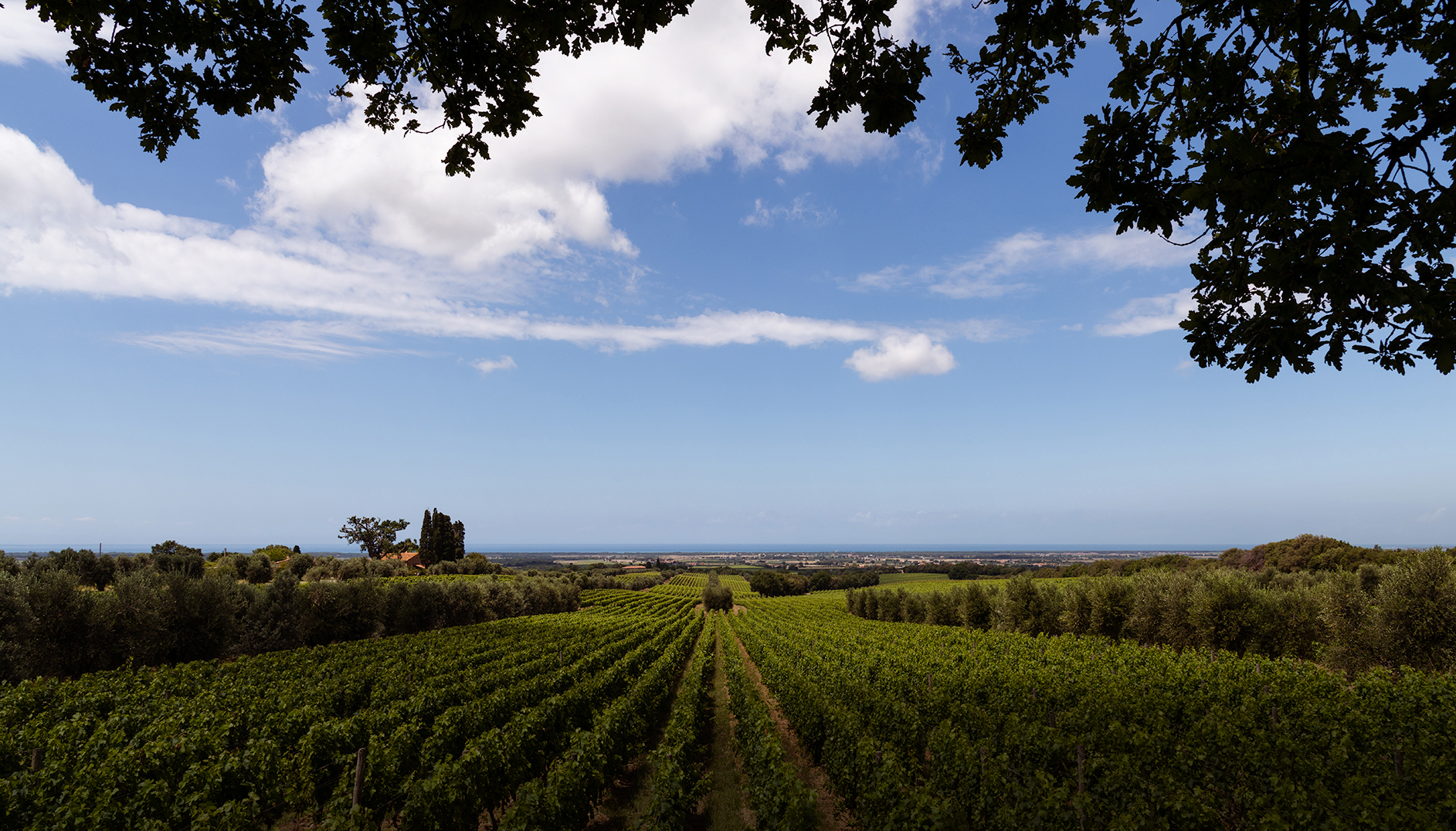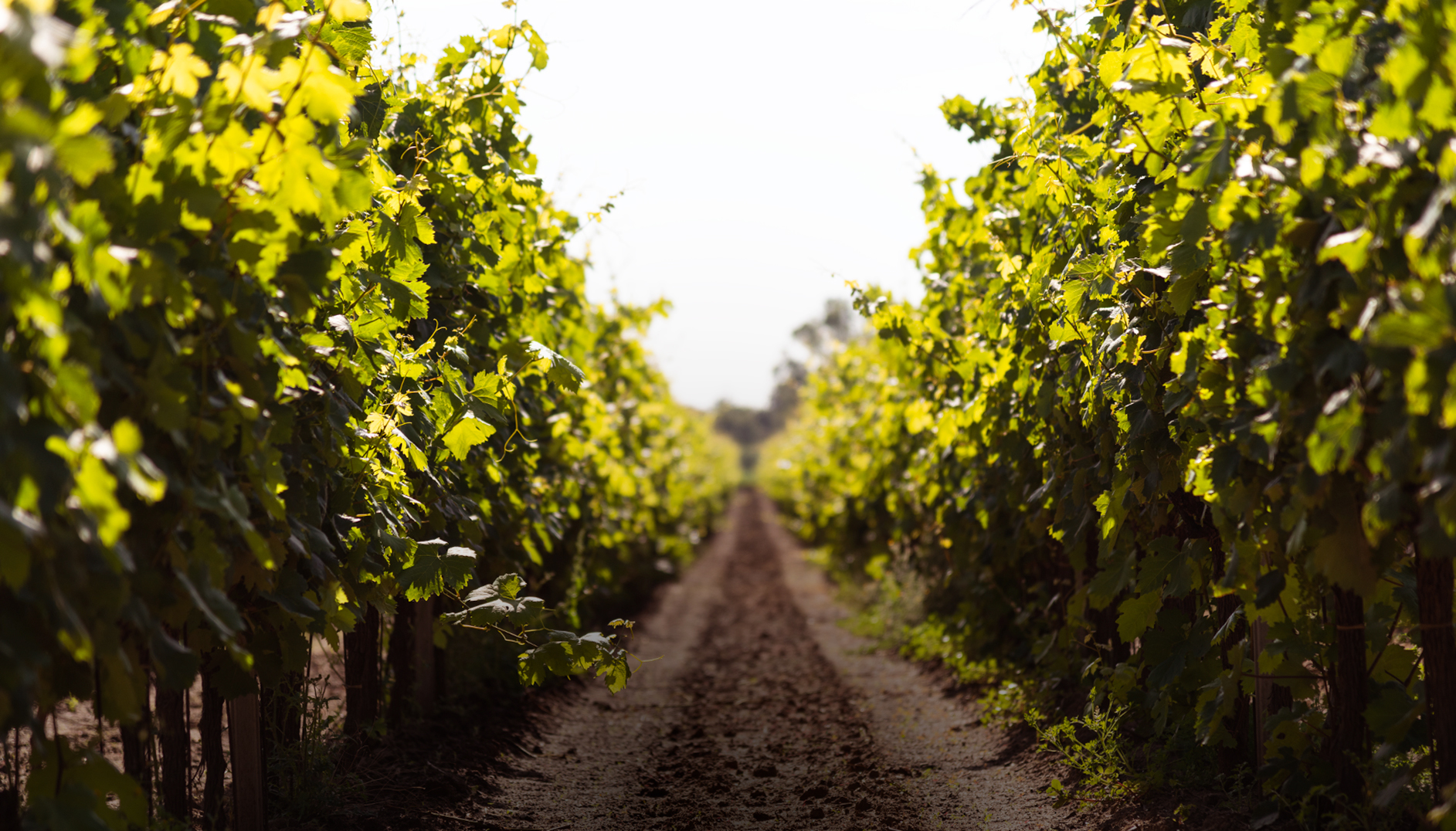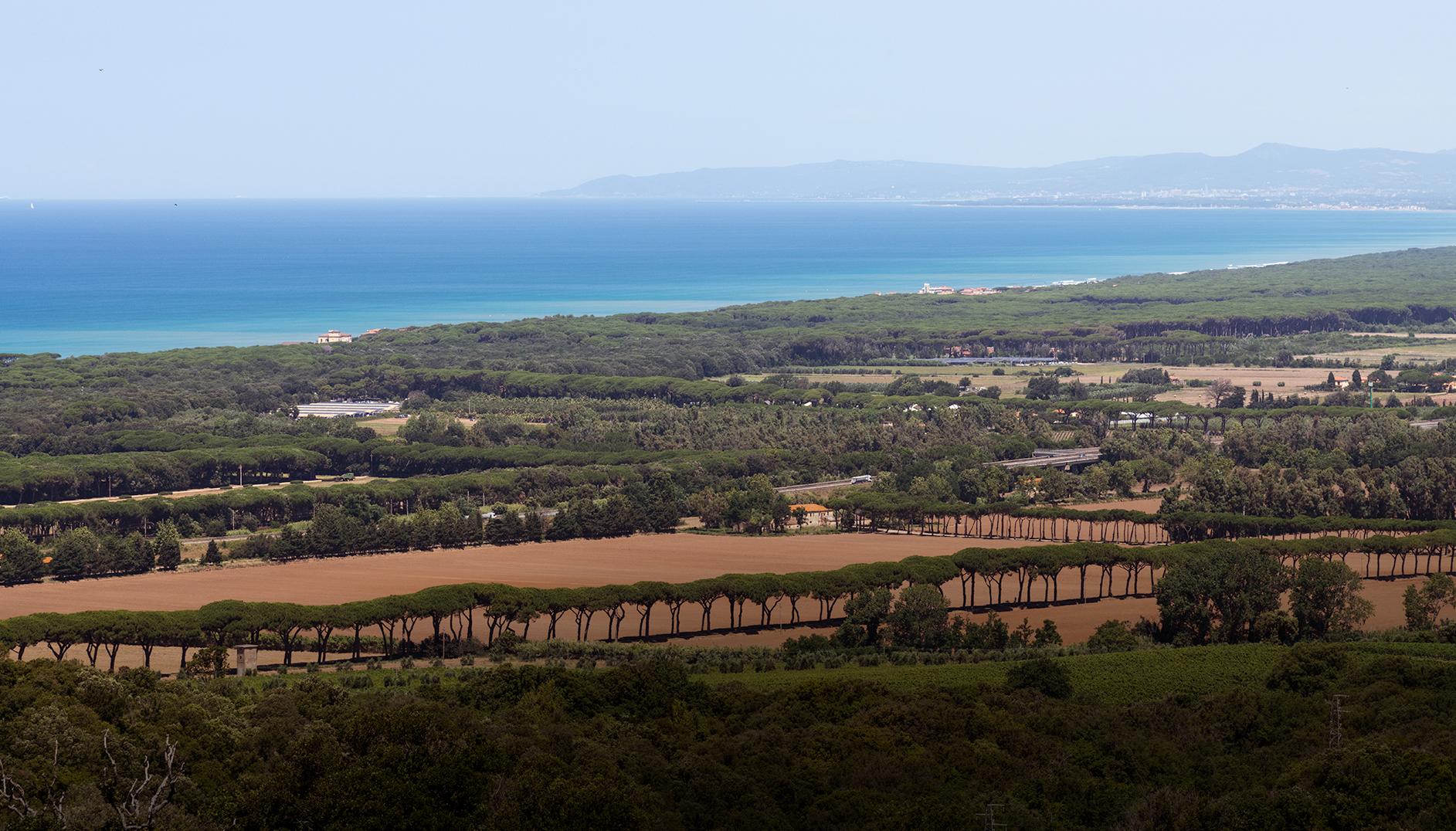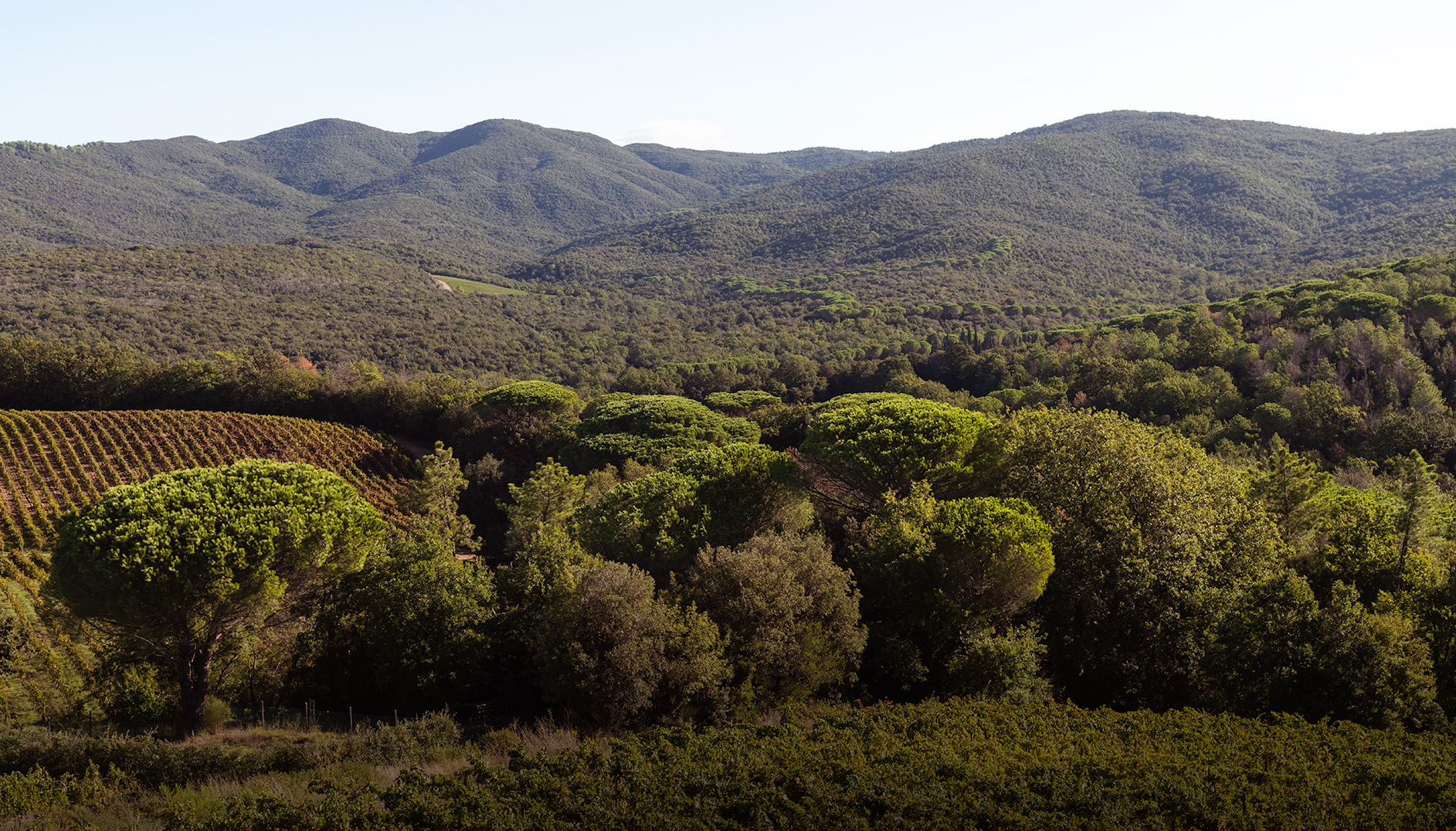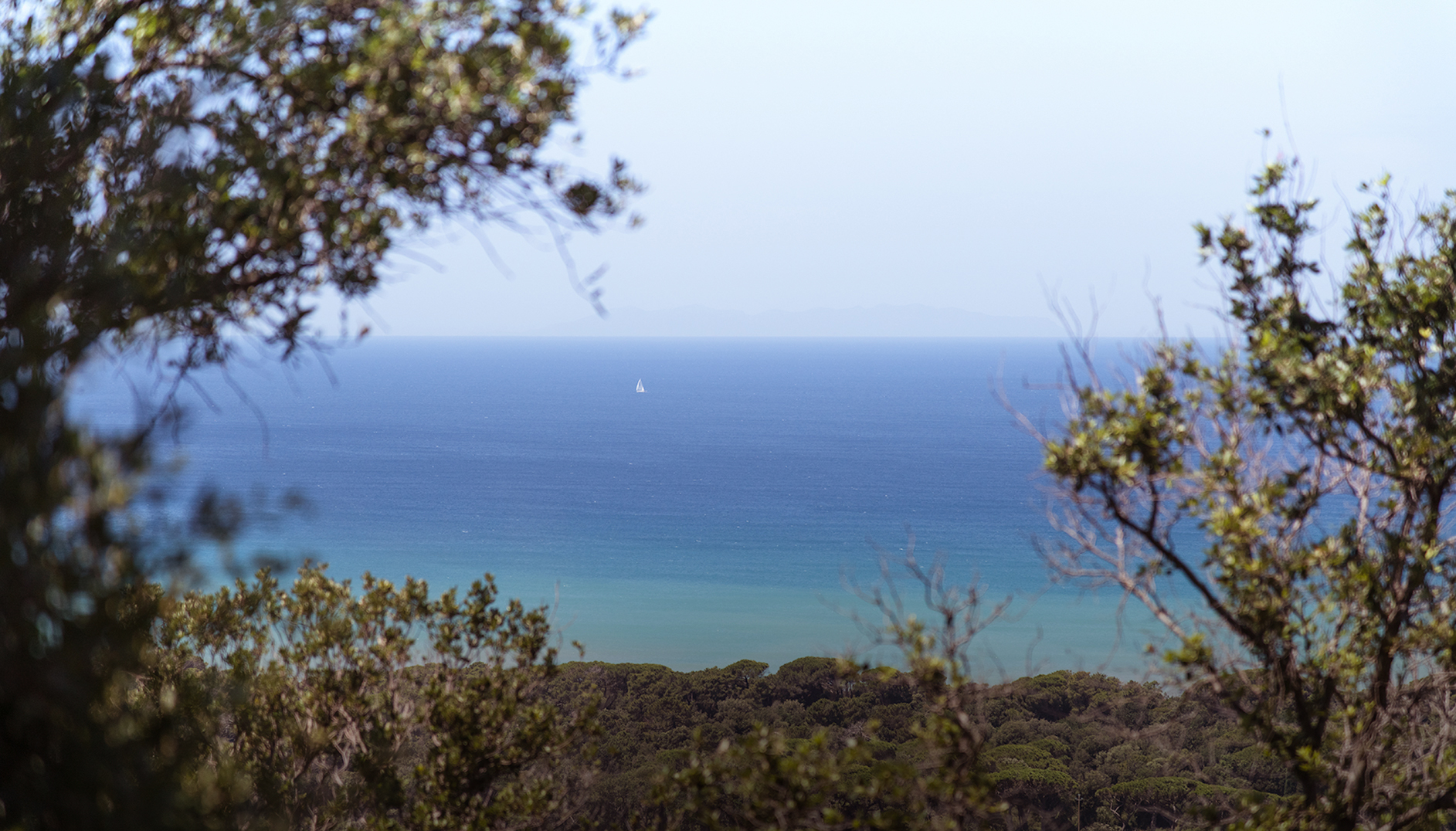2022
2022 was a year marked by a particular drought that began at the end of winter and lasted for a good part of the summer. A decisive turning point came in mid-August, when the first of a series of rains occurred which were providential for the most crucial period of ripening. The Bolgheri varieties have shown that they were able to react in a very positive way, resisting the initial lack water and metabolizing the rain as best and as quickly as possible, ultimately allowing for optimal ripening, especially for the less precocious varieties. The harvest started early, on average around the third week of August, and ended at the end of September. Unlike the initial expectations, the wines show not excessive alcohol levels, good acidity and extractions and maintain that freshness and elegance that are typical of Bolgheri wines.
2021
2021 has the features of a great Bolgheri vintage. The winter-spring period, characterized by a lot of rain, contrasted with the summer period where it was practically absent. A complementary situation, where the depth of the soil, one of the virtues of our territory, was fundamental to obtaining a great result. In particular, it allowed the plants, even during the 3 months of absence of rain, to access the water that had deposited in the soil in the previous months. It’s a harvest in which all the uniqueness of Bolgheri can be perfectly expressed through strength, finesse and elegance.
2020
The winter was mild and rainy. In March temperatures approached 0° on some nights, but there were no problems related to frost. The spring was warm with normal rainfall, ensuring regular vegetative development until flowering. In mid-June there were the last big rains before the summer, which was hot and dry. We had to wait until the end of August for new rainfall and a drop in temperatures which then rose again towards mid-September.
2019
Temperatures in both winter and spring were cooler than seasonal averages resulting in a late start of the vines’ vegetative cycle. Rapidly rising temperatures at the end of May accelerated vine development. Sunny, stable summer weather persisted until the end of the harvest season. The 2019 vintage promises to be outstanding from all points of view.
2018
The 2018 winter season was harsh with several days registering below zero temperatures; something that hasn’t happened for several years. The last half of winter brought frequent rain showers that continued throughout spring, replenishing groundwater reserves that were partially depleted after the drought in 2017. Bud break was slightly delayed, however favorable climatic conditions from April on stimulated vine growth that led to early bloom. Summer heat took over during the month of July and the first half of August, then occasional rain showers lowered temperatures giving new vigor to the vines. Beautiful weather continued until September guaranteeing a well-balanced conclusion to the harvest.
2017
The 2017 vintage began the year with a distinctly mild winter followed by spring with temperatures above seasonal averages. At the end of April, Tuscany, and Italy in general, experienced a sudden drop in temperatures, which fortunately didn’t cause any adverse effects in Bolgheri due to its close proximity to the sea. Weather conditions from the end of spring to August were hot and dry resulting in smaller grape clusters and lower yields. At the end of August, a series of rain events restored vine balance and guaranteed an excellent conclusion to the grape harvest, especially for late ripening varieties such as Cabernet.
2016
Like last year, 2016 was also an ideal year for vintage. The winter was hot and with rains at the end of February that allowed the accumulation of water reserves for plant growth. The vegetative phase took place in a regular and linear way, thanks to climatic conditions and precipitation in perfect seasonal mean. The summer was hot, but without excessive temperature peaks and above all with an excellent day / night excursion. These ideal conditions have been maintained until the end of the harvest, which is also regular and without abnormalities.
2015
The 2015 vintage has been quite regular and has met all the standards of a vintage handbook. The rather rainy winter preceded a mild and sunny spring, which led to a rapid and ideal flowering and flowering. The beginning of the summer was hot and with little precipitation, while the second half, since late July, was considerably mild, with some rains in August that in addition to refreshing the air also avoided excessive stress To the plants. These conditions, protracted throughout the harvest period, have allowed the grapes to reach an absolutely perfect maturation.
2014
The 2014 vintage was quite atypical for the booths in the area. The warm and rainy winter was followed by a slightly late spring, but mild is dry, which allowed a normal vegetative development. Since the end of July, the weather was cold and rainy, slowing down the normal course of grapes ripening. Fortunately, the months of September and October saw perfect conditions with mostly sunny and dry weather, which allowed to conclude maturations, albeit with unusual delays.
2013
Winter was particularly rainy, as was the following spring, which also brought lower-than-average temperatures; these conditions slowed down vine growth by some ten days. Summer was hot and dry, mirroring past seasonal averages; rainfall, while not frequent, was heavy, with even some rainstorms in August. September turned mild and brought slow, even ripening of the fruit and impressive acidity levels. Harvest started late, with some producers not starting until the second half of September.
2012
Winter was much colder than the average, so much so that February brought an unusual snowfall, while in spring, low temperatures brought a slightly-late bud-break. In May the weather turned warm and dry, presaging the arrival of summer. June experienced some rains, which afforded the vines relief and recharged groundwater reserves, which helped to confront a particularly-hot summer, marked by infrequent rain and very sunny days; but cool nights warded off excessive stress on the vines. The harvest started early, and the grapes were brought in at optimal ripeness levels, high levels of polyphenols, and highquality tannins.
2011
The winter was fairly cold, with good rainfall, while spring was mild, which in many cases advanced slightly the start of the vine growth cycle. Veraison was followed by some periods of rain, which, however, were not heavy, but they re-charged groundwater reserves and supplied water to the vines, ensuring good cluster development. Summer was quite hot, particularly in August, but day-night temperature differentials remained satisfactory. Grape ripeness was consequently accelerated, and a cool September further favoured this process, bringing excellent-quality fruit with exceptionally-high polyphenol levels.
2010
A cool spring with significant rainfall, a weather pattern which caused a delay in bud break of ten to twelve days. Early summer was warm and sunny. Vine vegetation, given the ample availability of water in the ground, was quite vigorous and the crop on the vine was quite substantial. Various producers decisively thinned the crop, but despite these vineyard operations yields per hectare remained somewhat high. Beginning in September, rainy days alternated with days of warmth and sunshine, and for this reason, delays in overall ripening reached some twelve to fifteen days. Merlot, on average, was picked in early September. Syrah and Cabernet Franc then followed, while Cabernet Sauvignon was harvested during the last week of September and the first week of October. The initial tastings of the musts indicated very fresh and fruity Merlot, elegant and fragrant Cabernet Franc, as was the case of Syrah, with aromas and flavors very much like those of the northern Rhône. The general impression is that proper and timely vineyard work on the part of producers gave them high level grapes to work with and that the wines, if less structured and rich in alcohol than usual, are ripe and very elegant.
2009
A winter and spring marked by substantial rainfall and cool temperatures, a pattern which left significant water resources in the ground. Bud break took place, as usual, between late March and April 10th. A dry May favored a regular and problem free bud set. Summer was hot with a July and August which saw temperatures frequently around 86-90° Fahrenheit (30-32° centigrade), with peaks as high as 95° Fahrenheit (35° centigrade) and daytime to nighttime temperature swings limited to 18-21° Fahrenheit (10-12° centigrade). Ripening accelerated, particularly in the case of early-ripening grapes such as Merlot. Picking began in late August with these precocious varieties, while later ripening grapes were delayed by mid-September rains which made full maturity a more gradual process. The harvest finished, nonetheless, with grapes in excellent condition.
2008
A warm and relatively dry winter. Heavy rains fell in the spring with frequent storms from March 4th to mid-June (110 millimeters – 4 and 1/2 inches – between early May and June 20th), causing a delay in bud set and creating risks of attacks of downy mildew. Early-ripening varieties were particularly affected, and spraying against vine diseases was difficult in conditions of wet and slippery terrain. Between mid-June and mid-September the climate was hot, sunny, and dry. Scattered rains in mid-August gave new vigor to the vines and guaranteed regular ripening rhythms in the grapes, thanks as well to favorable daytime to nighttime temperature swings. Temperatures dropped slightly in September. Harvesting began in early September for the precocious varieties and continued from mid to late September for the Cabernet Franc and Cabernet Sauvignon. The wines are concentrated, but with a higher than average acidity, and will surely be long-lived.
2007
A very mild winter with lower precipitation and higher temperatures than the norm, and bud break was ten days earlier than the seasonal average. Spring was also mild with well distributed rainfall, excellent growth in vegetation, and an early flowering. June was rainy all over the Tuscan coast, and summer began with a warm and dry July, while the August climate, cooler and marked by intense rainstorms during the second half of August, cancelled the acceleration in the ripening cycle which had occurred up to that time. September weather was lovely, dry and with important daytime to nighttime temperature swings. Ripening was perfect, slow and gradual in its concentration of aromas and structuring elements without any sign of over-ripeness. The harvest took place in ideal conditions.
2006
The initial phases of the 2006 vintage were characterized by a cold and rainy winter which led to a late bud break, a delay which a warmer early spring did not entirely recover. Flowering, accordingly, did not take place until after the first week of June, later than usual. The summer months were virtually rainless on the Tuscan coast, but temperatures, fortunately, were never torrid and this allowed the grapes to develop good aromatic and productive potential. The grapes, at the start of the harvest, were in perfect shape: concentrated and evenly ripe.
2005
The initial period of 2005 – with the exception of a brief period of particularly cold weather between February and March which delayed bud break for a few days – saw a fairly mild winter thenfollowed by a sudden burst of warm and sunny weather in the spring. This led to a early – by a week – flowering, around May 20th for the precocious grape varieties. The vigor of the vegetation and the potential grape production demonstrated to be in perfect balance right from the start. The amount of crop thinning, accordingly, remained at average levels, those of a normal year. June and July did their duty: much warmth, sunshine, very occasional rains … a perfect weather pattern for a complete and uniform phase of color change in the grapes. Ripening continued to progressively advance in August thanks to constant temperatures, never above average seasonal maximums (90° Fahrenheit – 32° centigrade). A bit of mid-month rain, finally, contributed to the development of the grape bunches. The first round of chemical analysis at the end of August indicated high levels of polyphenols, structuring elements which are always a comforting sign for a vintage of superior prospects. The harvest began on August 30th with the Merlot of the younger vineyards, but was then frequently interrupted by rainfall; the wind from the sea, however, dried the grapes still on the vine and the speed and alertness of pickers brought excellent grapes to the cellars. The last Cabernet Sauvignon vineyard was picked on October 11th, bringing to a close a harvest which had taken 23 working days to complete.
2004
One of the most regular vintages of the past two decades. The winter was characterized by ample rainfall and cold – but not exaggeratedly so – temperatures. Spring rainfall was also significant, but not excessive, particularly in April, and rainy days alternated with sunny ones. The torrid temperatures of 2003 caused an important fertility in the vines, but this was kept in check by crop-thinning operations in the vineyard. Summer was marked by a lovely sunniness and warmth, sustained but without the peaks of certain vintages. All the varieties enjoyed a slow, homogeneous, and regular development of vegetation. Harvesting of the earlier-ripening red varieties such as Merlot began in early September, and picking continued until late-September and early October with the Cabernet, harvested well in advance of subsequent rains (October with 140 millimeters – close to 6 inches – of rainfall was the rainiest month of the year). All of the grapes, particularly the white varieties, achieved an excellent aromatic ripeness thanks to the regular seasonal climate and to the important daytime to nighttime temperature swings.
2003
An autumn and winter with much rain and cold temperatures which left substantial water resources in the ground. Spring and summer, instead, were among the hottest of recent years. High spring temperatures led to an excellent bud break for all the grape varieties, and this was followed by a fine flowering and bud set. Sustained summer heat increased sugar levels in the grapes well in advance of the normal periods but, in the case of more arid areas and the more early-ripening varieties, created a certain vine stress and difficulty in attaining a complete physiological ripeness. The better wines come from cooler zones and from soils with significant percentages of clay. Daytime to nighttime temperature swings became more regular during the harvest period and allowed, in many cases, a complete ripening of the grapes. The wines of the vintage are, on the whole, powerful and warm, well concentrated and with high levels of alcohol.
2002
A spring with temperatures slightly above seasonal averages and substantial rainfall. This helped produce an early budding of the vines and, in the following period, an excellent flowering and bud set with a balanced number of bunches on the vine. Continuous rainfall marked the period from July on, accompanied by lower than average temperatures, and the two phenomenon created problems both for the ripening cycle and for the health of the grapes. Weather was variable during the harvest as well, with an early phase of stable weather during which reasonably ripe grapes could be picked followed by a rainier later period which prevented a certain number of producers from producing wines of real excellence. The 2002 vintage, on the whole, was one of the most difficult of the last decade, but in certain zones, those which usually enjoy a warm climate in normal vintages, or those with good circulation of air, succeeded in producing wines of real excellence, elegant and balanced if a bit less concentrated than in more favorable vintages. In terms of the fermentation and aging of the wines, skin contact and the period in oak were shorted and often, rather than new oak, barrels employed in previous vintages were re-utilized to avoid an excessive presence of oak in the wines.
2001
A mild winter with an early bud break. Frost just before Easter with -3° centigrade temperatures which here and there damaged the vineyards, principally those in lower lying areas. Early spring was cool, but was followed by warm temperatures in May. Summer weather was normal, but with a very hot second half of August. Flows of cooler air slowed down the ripening of the Cabernet in early September, but the grapes were eventually picked at more than satisfactory ripeness levels.
2000
Excellent springtime weather, which created the conditions for a n excellent balance between vine vegetation and the grape crop. The late summer color change arrived ten days earlier than usual (late July-early August). Summer was initially regular in character, but later characterized by torrid temperatures from mid-August to September 10th. Ripening was well ahead of schedule and led to an early start to picking – as much as ten days in some cases – compared to the average time period of the growing season.
1999
A cold winter followed by a rather rainy spring with temperatures above seasonal averages. These two phenomenon favored an early bud break and a highly successful bud set which gave a grape production above normal levels. The summer began with useful rainfall which assisted in maintaining a good balance between vegetation and crop size. The warm and dry period which followed led to an early color change in the grapes – a week ahead of schedule – of notable homogeneity. It was frequently necessary to thin out the bunches on the vine in order to keep production within proper limits for quality. The ripening was excellent thanks to veru regular weather during the month of September.
1998
Spring was warm and temperate and with an early bud break, but a drastic drop in temperatures in mid-April blocked bud growth. Temperatures began to rise once again in May, and the summer months were marked by hot, dry weather which continued all the way up to the harvest period, which began in early September. The grapes which were picked were high in sugar levels and perfecA winter with abundant rainfall and mild temperatures followed by an early spring of temperate, dry weather. Bud break was early, and the overall vine cycle began in advance, only to see a rainy May bring things back onto schedule. June was quite warm, and the next phases of the vegetation were once again in advance of the seasonal average. The summer months were hot and sunny with temperatures usually above seasonal averages, which slightly slowed down ripening, but the grapes were ready for picking approximately a week ahead of time compared to the norm. Substantial crop thinning was carried out for the early-ripening varieties (20% for the Merlot) to lighten the load on the vine and to assist an optimal ripening for the remaining bunches.
tly healthy. The 1997 vintage, low in terms of crop size, compensated for lesser quantities with an exceptional quality in the wines.
1997
Spring was warm and temperate and with an early bud break, but a drastic drop in temperatures in mid-April blocked bud growth. Temperatures began to rise once again in May, and the summer months were marked by hot, dry weather which continued all the way up to the harvest period, which began in early September. The grapes which were picked were high in sugar levels and perfectly healthy. The 1997 vintage, low in terms of crop size, compensated for lesser quantities with an exceptional quality in the wines.
1996
The initial part of spring, cool on the whole, saw a late bud break, but the flowering and bud set were highly positive. The first months of summer, with normal weather for the period, were followed by a change in the weather during the second half of August, with rains which slowed down ripening. A warm September assisted the process of grape maturation, but new rains forced a postponement of the harvest. Merlot was picked during the first ten days of September, while the Cabernet was harvested from late September to October 10th.
1995
A late spring followed by irregular summer weather with occasional rains. The climate turned perfect in September and led to an excellent ripening of the grapes.
